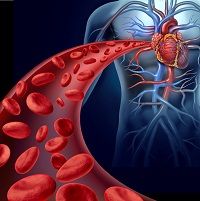Left Heart Remodeling in Patients with Transcatheter Aortic Valve Replacement
"Left heart remodeling after transcatheter aortic valve replacement (TAVR) is poorly characterized," according to Marco Magalhaes, MD, who presented at the American Heart Association (AHA) Scientific Sessions 2014.

“Left heart remodeling after transcatheter aortic valve replacement (TAVR) is poorly characterized,” according to Marco Magalhaes, MD, who presented study reults at the American Heart Association (AHA) Scientific Sessions 2014.
The study assessed echocardiographic data systematically collected from a cohort of 311 individuals who all had undergone TAVR. Magalhaes and his team of experts had calculated left ventricular mass index (LVMI), left atrium diameter index (LADi), and relative well thickness (RWT) at marked intervals. The left ventricular hypertrophy (LVH) was defined and further patients were assigned one of several geometries: normal, concentric remodeling, concentric hypertrophy, and eccentric hypertrophy.
Reverse remodeling — partial or complete – was defined as normalization of LVMi and/or RWT, and adverse remodeling as an increase in LVMi and/or RWT.
The study suggested that among LVH patients, there was a significant decrease in LVMi that was not accompanied by LADi change resulting in a higher LADi at all time points. Also, they found reverse and adverse remodeling were observed in 25% and 16% one year after TAVR, respectively. Normal geometry group had higher rates of aortic regurgitation with adverse remodeling, but higher rates of atrial fibrillation. Cardiac death and major stroke occurred uniquely among baseline concentric geometries.
Magalhaes’ research had reached a number of conclusions. It revealed the natural history of left heart remodeling in high-risk or inoperable aortic stenosis patients who were undergoing TAVR.
Additionally, they found that while reverse remodeling occured, it was considered incomplete, and, therefore not accompanied by a corresponding reduction in left atrial mono-dimension.
Moreover, adverse remodeling, associated with intra-procedural AR, lead to an increased incidence of atrial fibrillation. And, patients with a baseline concentric remodeling and hypertrophy patterns are at a higher risk for both cardiac mortality and stroke. Magalhaes concluded, “Our study indicates that the left heart remodeling is a potential target to improve outcomes.”